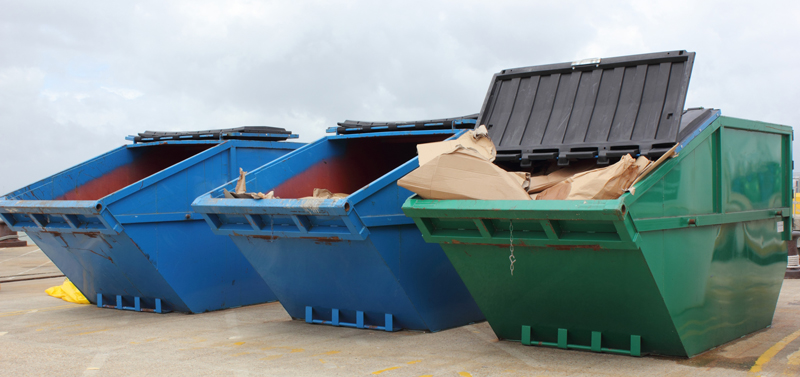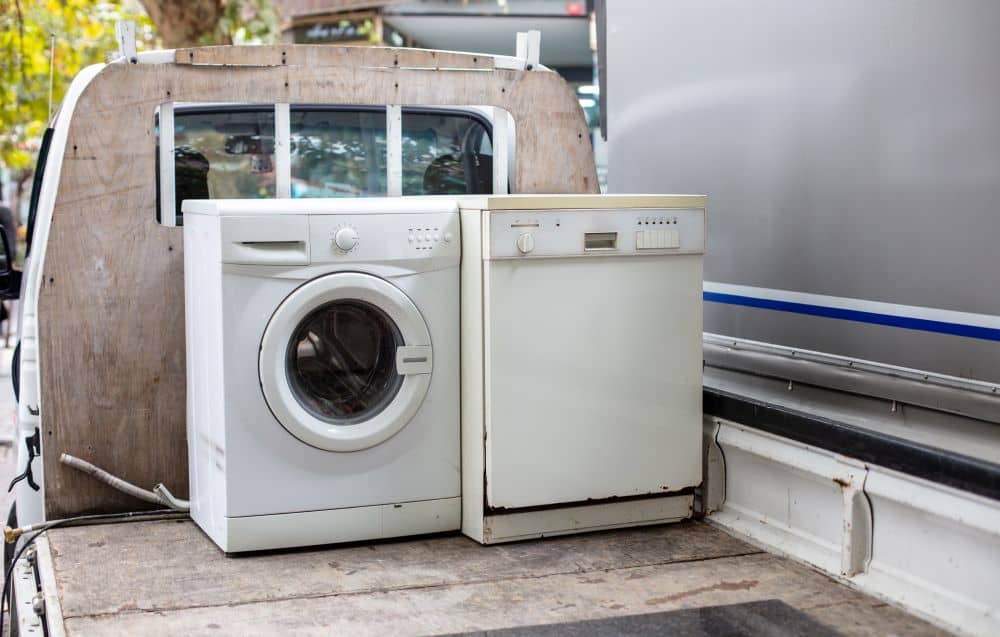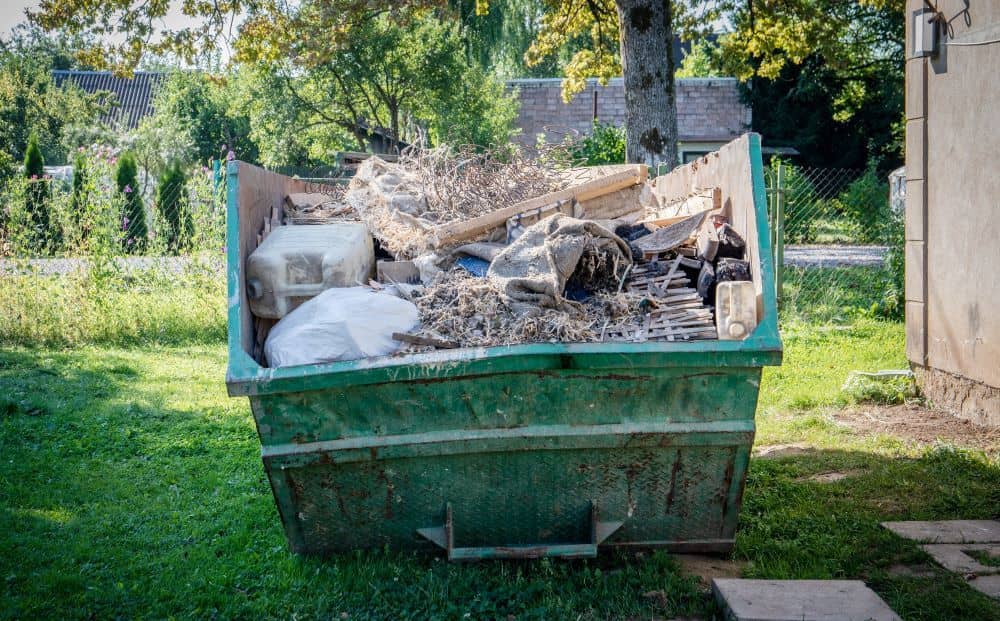
Updated January 20, 2023
When you order your skip bin, you likely read over the most basic usage rules. You know that you should never put car batteries, appliances, and cleaning products in your skip bin. You even read a few warnings about not smoking near or keeping children away from your bin.
But one rule gave you a slight pause: do not overfill your bin.
Understandably, you don’t want to pay extra for trips to empty your skip bin over and over again. We’re all guilty of trying to fit just one more item into the container, and that one item turned out to be 15 more.
The problem is that the skip bin truck will not pick up the overflowing container. Instead, a different pickup date will likely be offered to provide ample time to remove some of the waste from the bin. Alternatively, you will be asked to order another skip to accommodate the rest of the rubbish. Either way, you can agree that it is not convenient for you, especially if you look forward to getting rid of the waste, only to be disappointed in the end.
So, what can you do to save money and maximise your available skip bin space? Here are 10 tips to properly fill your skip bin to avoid extra charges and rescheduling pickups:
1. Pick the Right Size for the Job
Before ordering, ensure you have the most suitable bin size for your project. For example, a bathroom renovation typically means throwing out tiles, sinks, cabinets, and fittings. A three to four cubic metre skip is often acceptable for the job. If you’re getting rid of toilets and bathtubs, you may want a bigger one.
If you’re moving to a new home, you will likely need a small skip in the two to four cubic metre range – that is, if you’re only disposing of general waste. Meanwhile, if you’re taking out white goods and large pieces of furniture, go for the biggest size, which is 10 cubic metres.
Click here to check out our available skip bin sizes.
2. Use the Bin’s Length as a Guide
If you have a smaller skip, ranging from two to six cubic metres, you generally have a working height of 0.9 metres to 1.2 metres. That’s sufficient for typical clean-ups unless you’re dealing with wood planks and tree branches. But that’s not a problem since you can use the length of the bin to your advantage. If you’re disposing of longer items, trim them using a saw or any power tool, so they fit in the container.
As a sizing recommendation, getting a bigger bin than what you need is better than choosing one with inadequate space for the sake of saving money. You can end up ordering an additional bin, which is usually an unwanted expense.
3. Sort Your Rubbish
Throwing rubbish as you go is tempting, especially when renovating or cleaning. After all, it reduces the risk of accidents and also helps you work quickly. But doing so creates a lot of air pockets that you could have used to fit smaller debris you want to throw away.
Before putting anything into your skip bin, take a few minutes to sort what you have to make packing much more manageable.
4. Remove Items That the Council Will Recycle for Free
Although you could put recyclables in your bin, you could save space by adding paper, cardboard and certain plastics in your recycling bin and have the city remove that waste for free. Save your hired skip bin space for concrete, tiles, rubble, and similar materials.
5. Sell or Donate Items in Good Condition
Other people may want your old stuff, so consider giving away or selling your old furniture and appliances. Of course, make sure that they are still working and presentable before handing them over to other individuals or your local charity home.
6. Pack Like You’re Playing Tetris
In the game of Tetris, your goal is to take an assortment of pieces and make them fit together in such a way that they don’t go above the top of the screen. The same concept applies when filling your skip bin, where you place flat items like sheet metal and timber at the very bottom before the bulkier, heavier items, such as concrete and household junk. You can then slide smaller, lighter items between your heavier items and place any leftover debris on top.
Should you have loose items, including small toys and bricks, it is better to place them at the bottom of the bin or at least in the middle. Otherwise, they can be a safety hazard when placed at the top of a full bin, even if the container is covered with a tarp.
7. Distribute Weight Evenly
You must take the time to distribute the weight of your skip bin as evenly as possible to reduce the risk of tipping. While you don’t have to create a perfectly balanced load, you should not put all your heavy materials on one side and your light materials on the other. Work with varying sizes and weights from bottom to top. Typically, it is much safer to place the heaviest at the bottom than the other way around.
8. Break Down Bulky Items
By their sheer design, some items naturally take up more space than others, despite weighing less. For example, old tabletops, work benches and garden trimmings may quickly fill up your skip bin and leave little room for heavier items such as bricks, tiles, and plumbing pipes.
Fortunately, some items will crush easily, giving you plenty of extra room. If possible, remove any legs or arms from damaged furniture and dissemble broken-down appliances. Fill hollow objects with rubbish, such as buckets and tubs, and chop up any especially large branches or timber.
Do not attempt to crush items with your feet, especially if the rubbish is already in your skip bin. The garbage on top may hide broken glass or shattered timber, and you could severely injure yourself in the process.
9. Don’t Fill Above the Rim
It is against the law to fill above the rim, which is why we always remind our customers to heed this simple rule. It is illegal to transport bins filled above its water line, resulting in fines and demerit points if breached.
There’s also the risk of an object dislodging from the bin while in transport, which can cause injuries or road accidents. Similarly, it is prohibited to use hungry or greedy boards, which involve plywood, doors, or gyprock, to create more depth for the bin. It’s dangerous to do so since the artificial walls are not engineered to offer structural integrity.
Check this blog post if you’re interested in learning more about bin laws in WA.
10. Never Mix and Match Waste Types
Remember to select the correct type, which instructs you about what you can and cannot put in the bin. Your goal is to dispose of your rubbish properly, so you have to be mindful that you’re placing everything in the appropriate container.
At Backyard Bins, we have two main types of skips that you can order:
- General Light Waste: For your household clean-ups, spring cleaning, and other similar activities, we recommend this skip bin. You can put any household junk, along with green waste, furniture, and timber. Depending on the size, you can also place small to large white goods, metals, and furniture.
- Mixed Waste: We often advise our customers to order this skip bin type for construction or renovations. You can place green waste, as well as the other items mentioned in general light waste, along with concrete, tiles, turf, and soil.
If you’re dealing with asbestos in your construction, we highly advise you to seek professional services to assist. Please note Backyard Bins no longer offers asbestos removal services.
Make the Most of Your Skip Bin
These essential loading tips can help fill every last centimetre of your skip bin without overfilling it. But if you worry that your project may be too big for your skip bin, consider upgrading to a larger size, just in case.
If you would like to learn more about our skip bin service, please don’t hesitate to get in touch with Backyard Bins. We can guide you and answer any questions you may have regarding the right skip for your project.
Backyard Bins Team
“ [rcblock id="2165"]”

